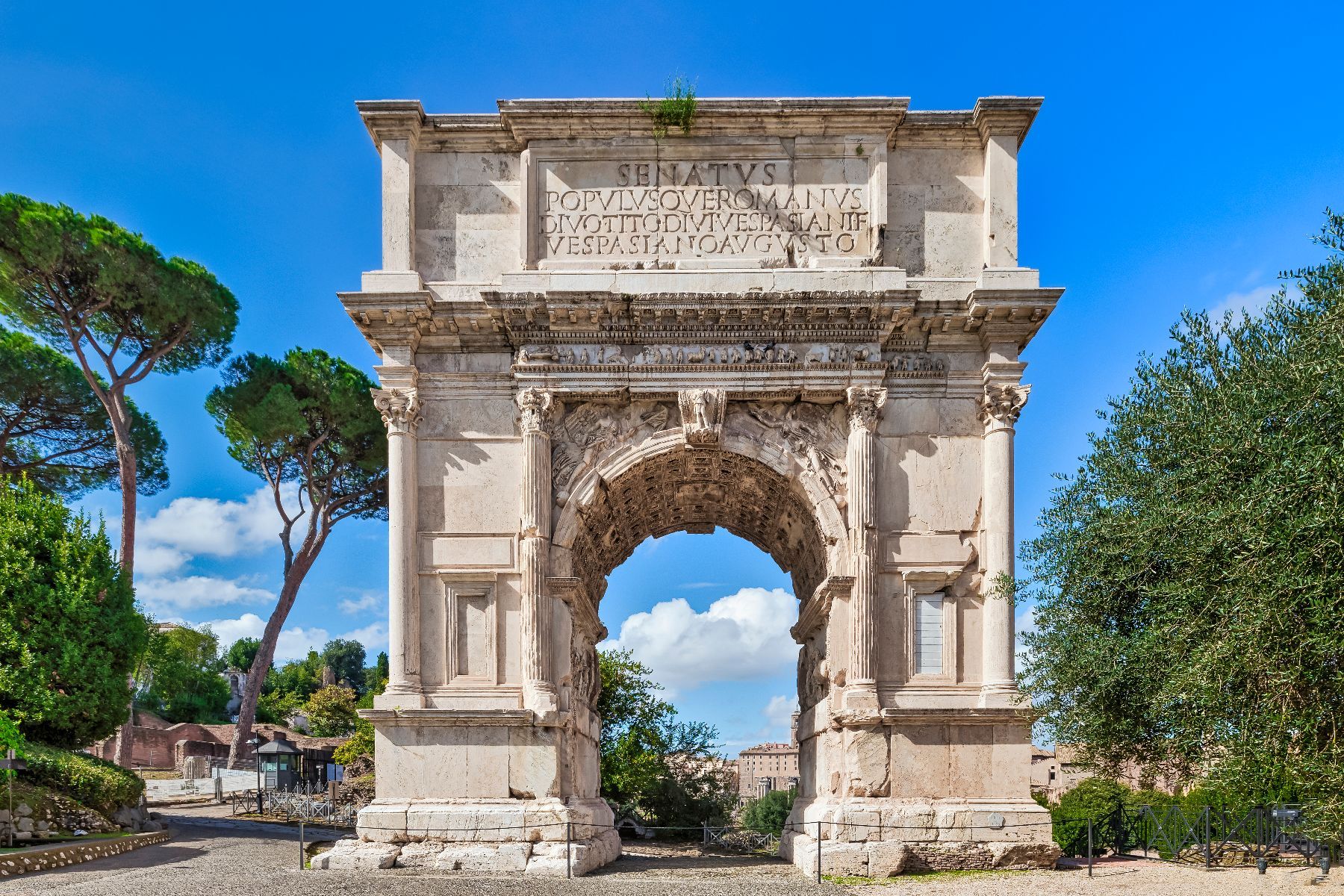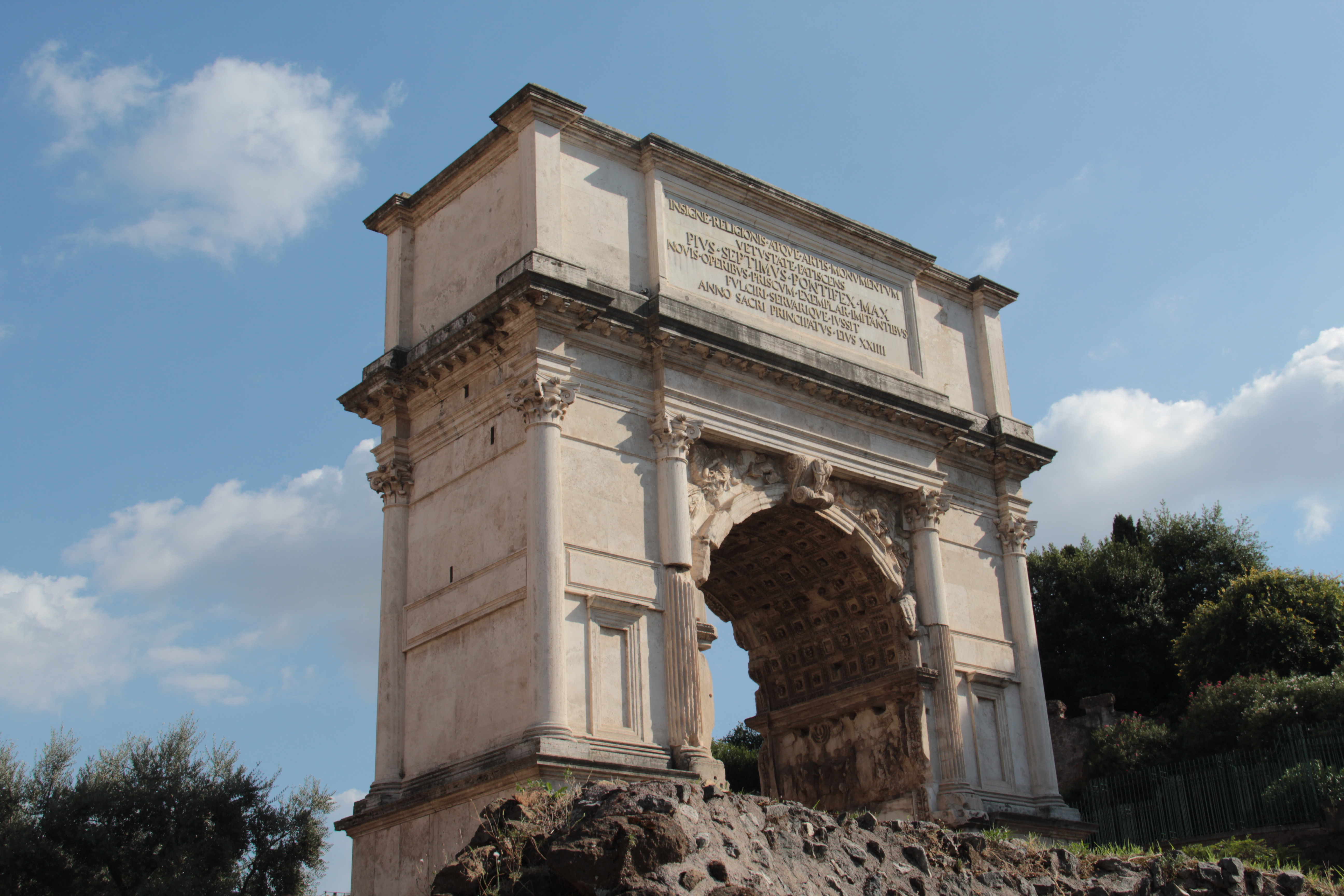

The Didymus lamp, for example, features a human figure seated on the back of the monster.

There are however some striking differences between Titus' candelabrum and its pagan counterparts. The dragons were a popular decorative motif in Roman art, and the whole candelabrum seems to testify to the strong Roman influence. The eagles were, of course, the best-know symbol of Roman sovereignty. A similar base has been excavated from a Roman temple at Didymus, now in southern Turkey. Though the images have been eroded over time, it is possible to discern vestiges of such figures as eagles and fish-tailed sea serpents or dragons. Some clues to this mystery are suggested by the ornamental designs that appear in Titus' Menorah. How then are we to explain the discrepancy between these two different renderings of the Menorah's base? Moreover, the proportions of the candelabrum, with its oversized base, are in such blatant conflict with the classical notions of aesthetic form that it is inconceivable that a Roman craftsman would have invented them. In this case, almost all the details demonstrate to the sculptors' intimate knowledge of the Temple's vessels as described in the Bible and other Jewish sources. There are many factors that testify to the authenticity of the depiction in Titus' arch: In general, Roman triumphal arches were designed as historical documents and towards that end strove to be as accurate as possible. However the base of Titus' Menorah is not a tripod, but the now-familiar two-tiered hexagonal structure. On that arch we can see a meticulously detailed relief of the spoils of Jerusalem's Temple being carried through the streets of Rome, and the Menorah is perhaps the most prominent of the treasures. The source for this image is the Arch of Titus, erected around 81 CE to commemorate the Roman triumph over the Jewish insurrection. Most of us imagine the Menorah with a broad, solid base, like the one that appears in the official seal of the State of Israel. This portrayal of a Menorah supported by a tripod base is not the one that springs most naturally to our minds.

This would agree with the evidence of the Talmud (which speaks of an indeterminate number of "legs"), as well as with the three-legged Menorah images that were incorporated in much of Jewish art in later centuries. One notable feature of that depiction is that it seems to be standing on a sort of tripod. The representation of the candelabrum on the Hasmonean coins provides us with our oldest picture of the Menorah. The symbolism was quite appropriate: In addition to its associations with the Temple (the coins proudly proclaimed Mattathias' position as High Priest), the Menorah served as a reminder of the heroic exploits that had brought his family to power as liberators of their people. The last Hasmonean king, Mattathias Antigonos (40-37 BCE), chose to place an image of the Menorah on the coins minted under his regime. Only later was a new golden replica manufactured, which was probably lit at the official rededication of the purified Temple, the first Chanukah. Until a new candelabrum could be crafted, the soldiers improvised a makeshift device out of hollowed spearheads. Among the artifacts that had been stolen by Antiochos was the golden candelabrum, likely the same one that had been fashioned by the returning Babylonian exiles in the time of Ezra and Nehemiah. Tiny timeline: ancient Egypt and Mesopotamia in a global context, 2nd–1st millennia B.C.E.When the victorious Maccabees returned to the desecrated Temple they found that much of its wealth and splendor had been plundered by the Greeks. 3 (#99–152)īrowse this content A beginner's guide Tiny timeline: ancient Egypt and Mesopotamia in a global context, 5th–3rd millennia B.C.E.

At Smarthistory, the Center for Public Art History, we believe art has the power to transform lives and to build understanding across cultures.


 0 kommentar(er)
0 kommentar(er)
